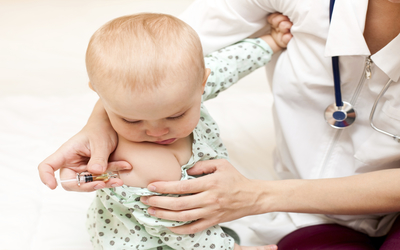Children require as many as 25 vaccinations and booster shots in the first 15 months of their life alone, which makes it difficult to know what they’re getting and why. These vaccines are vital in helping children get started in life without the worry of diseases and ailments that their bodies can’t fight off at a young age, as well as some that they’ll need well into adult life as well. Here is a list of some of the most important vaccinations that your child will receive, and the potentially damaging germs that they are there to protect your child from. If you’re unsure when you should book these vaccines, your GP will be able to advise you what they need and when.
Hepatitis B
Your baby should receive a vaccine against this before they leave the hospital, and then have a booster shot at between one and two months, and then a third at six to 18 months. As indicated, this protects against the incurable virus of hepatitis B which affects the liver. This particular virus can be passed on to a baby during childbirth if the mother is infected with it. This is because the virus is spread through blood contact and other bodily fluids – even sharing toothbrushes can increase your risk.
MMR
This is a combination shot which protects against three viruses – measles, mumps and rubella. Measles causes a high fever and a rash which spreads along the entire body. Mumps causes pain in the face with swollen salivary glands, and sometimes swelling in the scrotum in boys as well. Lastly, Rubella or German measles can cause birth defects if the infection is caught by the mother during pregnancy. The first vaccine is given at 12 to 15 months of age, and then the child receives another one between the ages of 4 and 6. Sometimes, this vaccine is combined with a chickenpox vaccine – this is to reduce the amount of shots the child has to endure.
DTaP
The DTaP vaccination protects the child against diphtheria, tetanus and pertussis. Diphtheria is a germ which can cause a grey or black film to develop in the throat. Tetanus is an infection which can cause muscle spasms in the body which can be so strong that they break the child’s bones. And pertussis is a very contagious disease which can lead to a severe and uncontrollable cough in the patient which is known as whooping cough. Children have five doses at 2 months, 4 months, 6 months, 15 to 18 months, and 4 to 6 years of age. They will then have a booster at 11 or 12, and then every 10 years.
Hib
Haemophilus influenza type B is a bacteria which develops into meningitis. This causes inflammation in the membranes that surround the brain and spinal cord, which can be very dangerous for children under the age of five. Hib vaccines are usually given at two, four, six, and 12 to 15 months of age. There may be a six month shot required as well, depending on the type of vaccine used. It’s common for the child to experience fever, swelling and redness where the vaccination was given as side effects from the jab. These will pass though.
Polio (IPV)
The Polio vaccine is a massive success, and because of it there are no more cases of the disease. The virus hasn’t been eradicated worldwide, though, so children still require the shot to protect them. This is a very serious condition and can lead to paralysis or even death in severe cases. Children have this shot at two, four, and six to 18 months, then again between the ages of four and six years.
